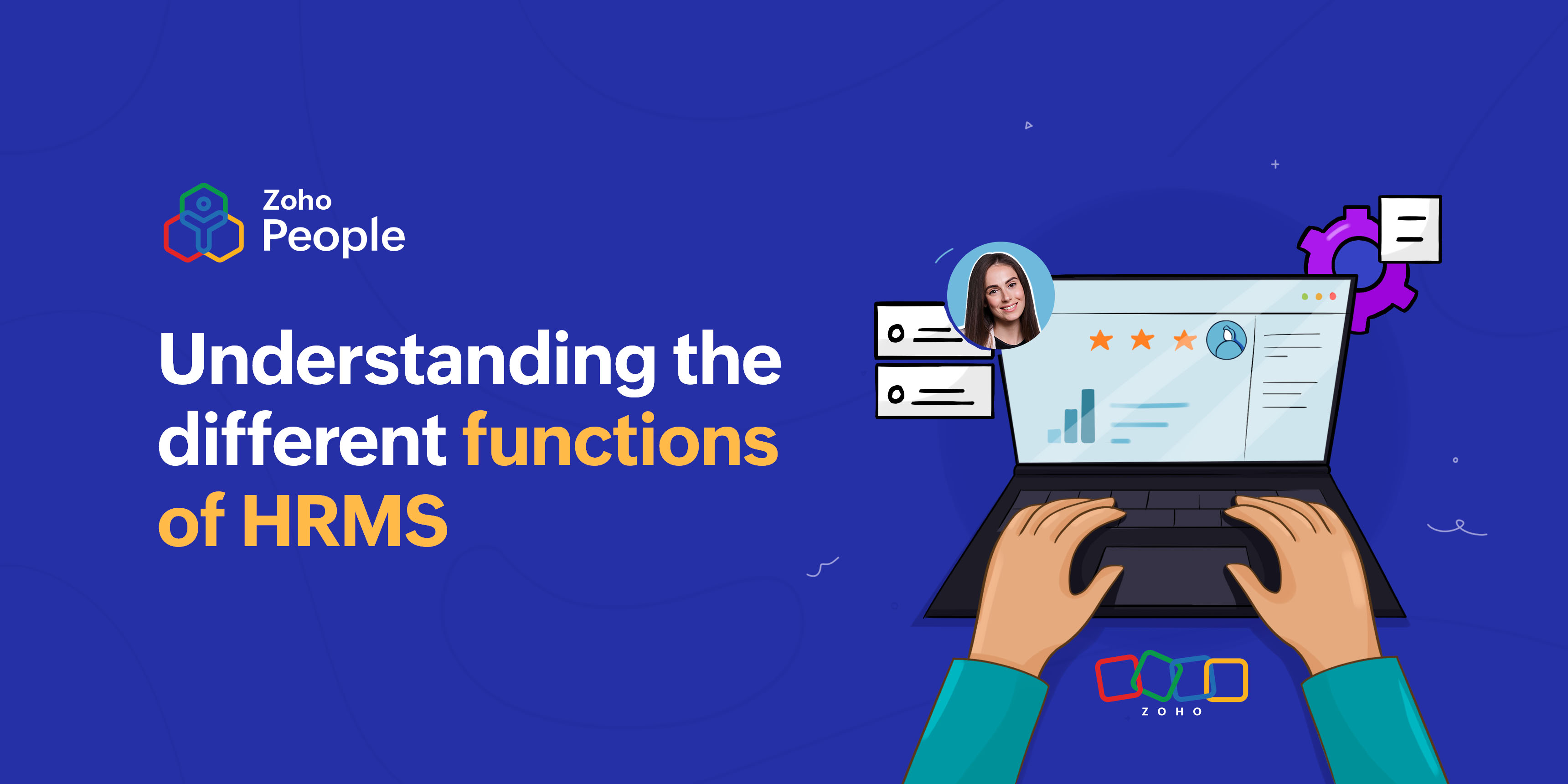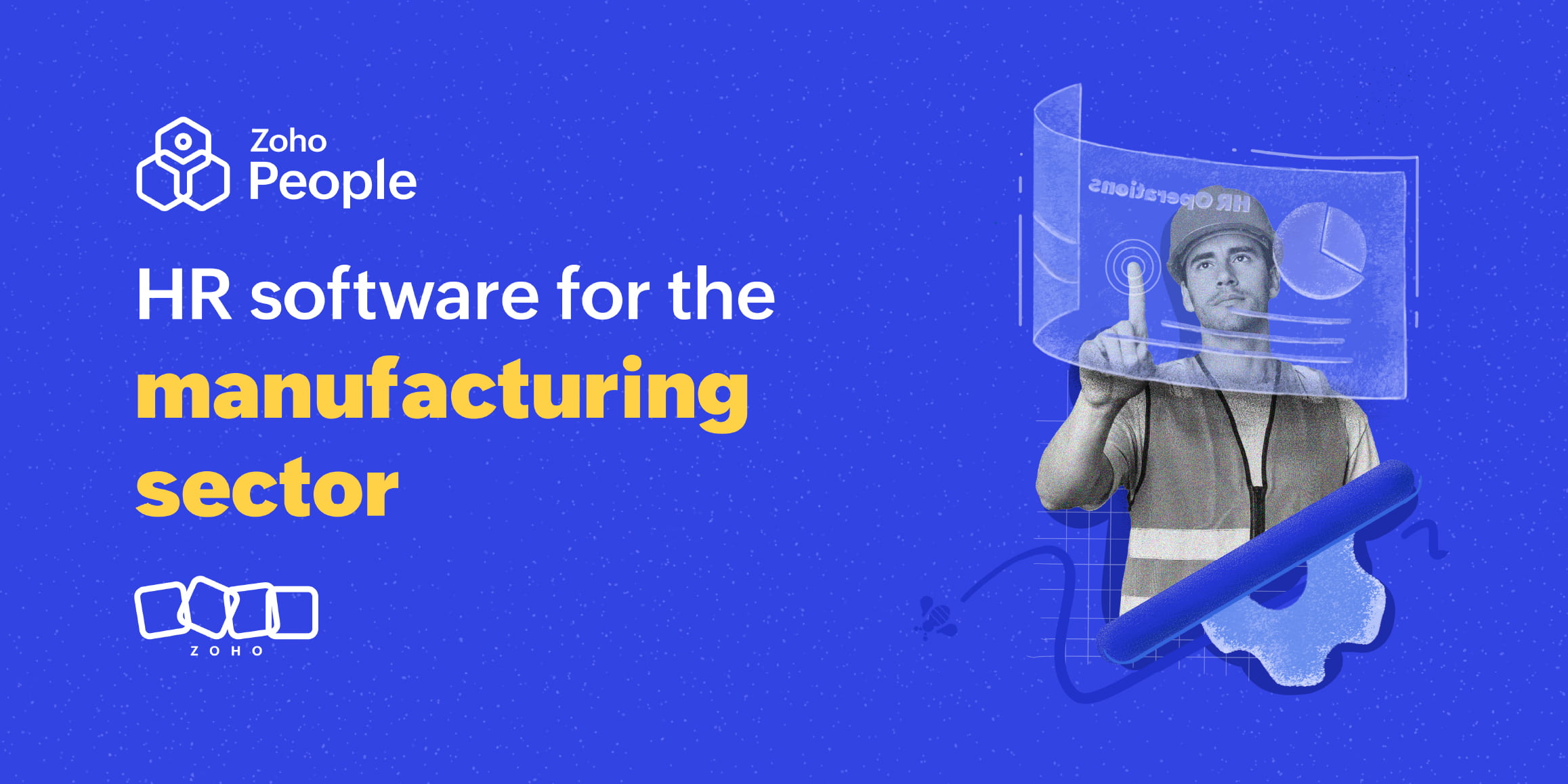- HOME
- More
- On Zoho People
- What are the functions of a human resources management system?
What are the functions of a human resources management system?
- Last Updated : August 23, 2023
- 1.3K Views
- 3 Min Read

The decision to invest in a human resources management system (HRMS) can pay off in different ways, irrespective of the size or location of your organization. Many of today's HR teams handle more than the typical administrative processes, like maintaining records and managing databases. The role of HR has become more strategic, meaning teams are responsible for defining the company culture, overseeing workforce planning, and spearheading crisis management. Success in these areas can make or break an organization, meaning HR teams cannot afford to be held back by repetitive tasks. With an all-in-one HRMS in place, companies can automate and streamline every aspect of their HR operations. Here are some of the key functions of an HRMS:
Allows HR teams to manage employee database seamlessly
The HRMS makes it very easy for HR teams to maintain employee data and other related records. It processes sensitive employee and company data in a way that adheres to the regional and national data management laws, and it provides a way for organizations to clearly define who can view, edit, and delete employee data with role-based access features. Another greatest perk is that all employee information is centralized, irrespective of location or department. This means that anyone with the right permissions can access relevant data at their convenience.
Automates everyday HR tasks
An HRMS empowers both employees and HR teams to manage everyday operations with the click of a button. For instance, as soon as employees come to the office, they can use the web app, mobile app, or biometric device to mark their attendance. The same attendance information can be accessed by HR teams from the HRMS to process payroll or ensure compliance with labor laws. Similarly, as employees start their day, they can the system's timesheets to keep track of their work items and record how much time they spend on each of their tasks. These timesheets can then be sent to managers and HR teams for approval. Employees can also apply for leave and managers can approve them from the system itself.
Monitors employee performance
Managing employee performance is another essential HR operation that often takes a lot of time and involves a significant amount of paperwork. With an HRMS, managers and HR teams can use different evaluation metrics such as goals, KRAs, competencies, and skillsets to get a better idea about how employees are progressing with their work. During the appraisal process, managers can use self-evaluation and 360-degree feedback methods to gain more insights into employee performance. They can also use the system to configure monthly or quarterly performance reviews and ensure that employees stay on the right track.
Provides insights for optimizing HR processes
An HRMS typically comes with several intuitive reports that provide companies with key insights into their HR processes. For instance, when it comes to time management, the system can provide reports that highlight the difference between the scheduled hours and actual worked hours. This will help you identify if employees can complete their tasks within the allocated time or if additional hours are required. Similarly, daily leave status reports can reveal employee leave trends, and performance reports can indicate whether changes are required to your performance management process.
Integrates with other systems
Most HRMS software integrates with a variety of third-party applications so that employees and HR teams don't have to juggle different systems. For instance, some integrate with business communication apps so that employees can complete simple HR operations like marking their attendance, checking their leave balance, and tracking the status of their approvals from within the communication app itself. Similarly, an HRMS can easily integrate with e-signature tools so that employees and HR teams can exchange documents like offer letters, and appointment letters.
Wrapping up
Having an HRMS to automate operations can provide a convenient working experience to your employees while saving you a substantial amount of time. We hope this blog post gave you a clear idea of the different functions of this software!
From onboarding and offboarding to compliance and reporting, our unified HRMS Zoho People can truly streamline HR operations. It's highly scalable, meaning it will grow along with your organization. Learn more about Zoho People.
 Tarika
TarikaContent Specialist at Zoho People


